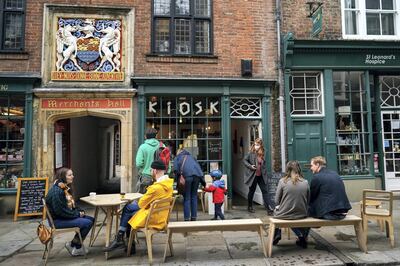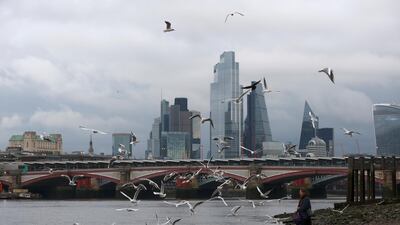Britain’s economic recovery stalled in October with a growth rate of just 0.4 per cent on September amid a surge in coronavirus cases, according to official data.
The UK economy has now grown for six months running, but it still remains 7.9 per cent below pre-pandemic levels, with October’s small GDP rise following a 1.1 per cent expansion in September, according to the Office for National Statistics. This means October the weakest montly growth since output collapsed in April during the first lockdown.
UK finance minister Rishi Sunak, said the government’s support packages have protected more than 12 million jobs and millions of businesses, with £6 billion ($7.98bn) pumped into the NHS to ensure the UK was the first country in the world to roll out a vaccine.
“I know people are worried about the winter months, but we will continue to support people through our Plan for Jobs to ensure nobody is left without hope or opportunity,” he said on Thursday.
Britain suffered the biggest hit of any major economy when its GDP contracted by 19.8 per cent in the second quarter of this year. The country also has Europe's highest coronavirus death toll with more than 62,000 deaths recorded so far.
The economy rebounded in the third quarter, growing 10.2 per cent between August and October compared with the previous quarter, however, Ruth Gregory, senior UK economist at Capital Economics said the minor rise in October’s GDP suggests the recovery had already burnt out even before November’s lockdown was imposed.
“That left the economy still 7.9 per cent smaller than before the crisis, a bigger shortfall than during the whole of the Global Financial Crisis,” she said.
Output was also 8.2 per cent weaker than in October 2019 and Ms Gregory does not expect the economy to regain its pre-Covid level until the end of 2022.
However, there were some bright sparks with manufacturing recovery still going strong at the start of the fourth quarter, with output in the sector rising by 1.7 per cent month-on-month.
The 1.3 per cent monthly gain in overall industrial production left output in that sector only 4.4 per cent below its pre-crisis level. The construction sector also registered a solid 1 per cent gain leaving the sector 6.4 per cent smaller than before the crisis.
Car manufacturing continued to recover and retail grew strongly as well, according to ONS.

The service sector did not fare as well, rising by just 0.2 per cent, as government restrictions on socialising in much of the country led to a 14.4 per cent fall in output across the accommodation and restaurant sector.
This means output in the services sector as a whole remains 8.6 per cent below its pre-pandemic level.
Business surveys in October had already shown a slowdown in growth, and economists expect output to contract significantly in November, when the government imposed a partial lockdown in England, which closed non-essential shops and most hospitality venues.
“The second lockdown probably caused the economy to contract sharply in November, perhaps by up to 8 per cent month-on-month. The economy still has an awful lot to contend with in the form of ongoing Covid-19 restrictions in the coming months, rising unemployment and a large overhang of corporate debt,” said Ms Gregory.
The decline is expected to be much more limited than in the first lockdown, when restrictions were tighter and businesses had less time to adapt, however, the end of the post-Brexit transition period on December 31 will pose further challenges.
Richard Pearson, director at investment platform EQi, said the new vaccines provided some relief to the markets last month and hope for the future, but there is a long way to go until the economy begins to show the same relief.
“Coupled with the ongoing uncertainty around a post-Brexit trade agreement, it’s likely the UK economy won’t recover to its pre-pandemic state for years," he said.


